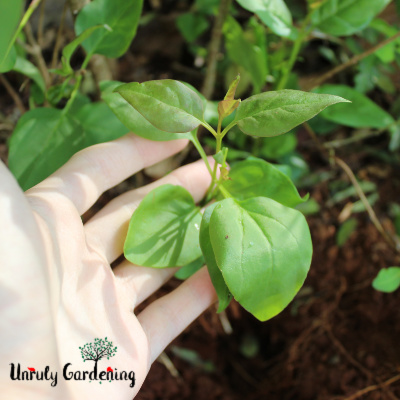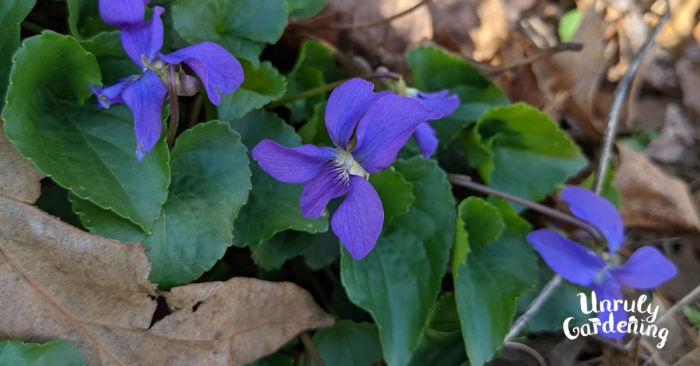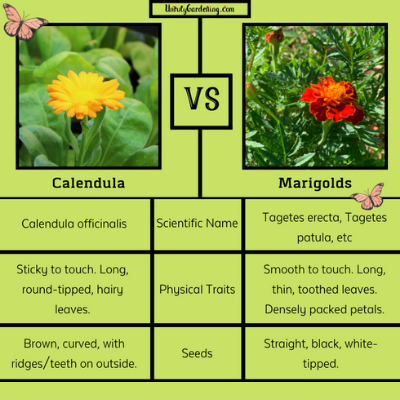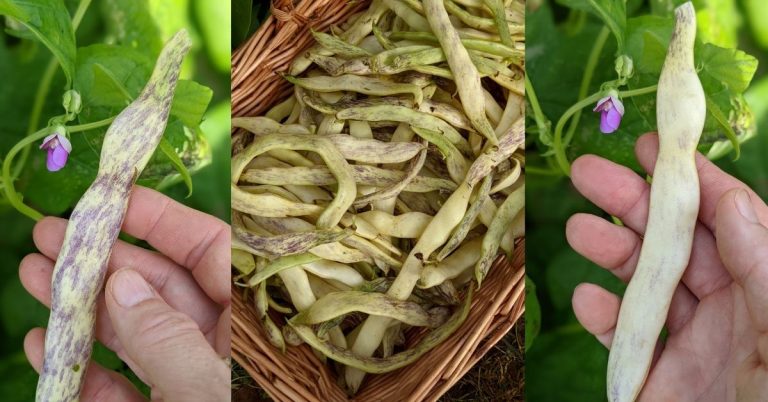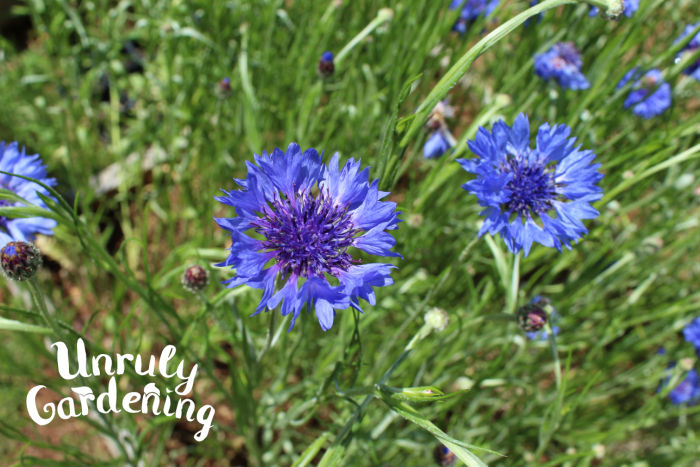How to Grow Ageratum from Seed
Ageratum, also known as flossflower, bluemink, and Mexican paintbrush, is an easy-to-grow, old fashioned favorite in cottage gardens and flowerbeds.
Fluffy flowers in shades of blue, lavender, or white stand out in lovely contrast against the rich green foliage.

Well loved by pollinators as well as people, this quick-to-bloom annual isn’t only beautiful in the garden, but they’re also a good source of nectar for butterflies and bees!
At a Glance:
Annual Flower: Ageratum (Ageratum houstonianum)
- Seed size: Tiny
- Sowing method: Light-dependent germinator- seeds are surface-sown.
- When to start: Sow seeds indoors 6-8 weeks before your estimated last frost date.
- Cold-hardiness: Cannot take frost, seedlings are very weak to low temps. (They’re fussier about being cold than peppers!) Watch carefully when hardening-off, and if cold weather threatens, bring them in.
- Transplant time: Plant out after all risk of frost has passed completely.
- Sun required: Can get by with partial shade, but can also get leggy from it. Full sun produces best results.
- Possible to grow in pots?: Yes
- Spacing: 8-12 inches apart (20-30 cm)
- Estimated days until germination: 7-10 days
- Pruning/Pinching required for branching?: No
- Support required?: No
- Bloom time: Late Spring to Fall
- Bloom colors: Violet, lavender, blue, maroon, pink, or white flowers depending on variety
- Attractive to pollinators?: Yes! Butterflies and bees both may pay a visit your ageratums.

Sowing & Seedling Care
Prepare your seedling tray or containers before pulling out your seeds. You may use whatever soil or containers you personally favor- we grow ours in Foxfarm’s Ocean Forest soil mix, in standard black seedling trays.
Whatever container you use, make sure it has drainage holes. Lack of drainage can lead to the soil holding too much moisture, which can cause rot, seed failure, or drowned seedlings very easily.
To prepare for sowing, simply moisten your soil with warm water, and fill your containers of choice with it. Pre-moistening soil makes growing ageratums much easier- it lets you skip having to water the tiny seeds after sowing, neatly avoiding the risk of displacement.

Sowing
Ageratum seeds are very small and fine. Be careful to handle them in a room without any strong drafts or breezes, or your seeds might just end up blowing away!
Surface sow the seeds. To do this, gently sprinkle a small pinch of seeds on the surface of the moistened soil. To ensure the seeds make contact with the moist soil, use your fingertips to tamp them down.
Surface-sown seeds tend to dry out quickly, but dry conditions often lead to poor germination. So to help keep the seeds moist until they germinate, it’s a good idea to cover the seed tray/containers with a clear covering until seeds have germinated. A greenhouse top, a pane of glass, or plastic wrap can all do nicely.
You can lightly mist over the seeds with a spray bottle before covering, if desired. It’s not required- the pre-moistened soil should contain enough water to allow the seeds to germinate on their own.

As a light-dependent germinator, it is important to place the seeds in a location that’s both warm and bright. Grow lights, of course, make that easy, but if they’re out of your budget or you simply don’t like using them, aim to place the seeds in, say, your sunniest windowsill for best results.
It is also important to make sure your seed trays/containers are placed somewhere warm. Ageratum prefers heat over cold, and the germination and growth of the seeds can be slowed considerably if they’re allowed to get too chilly.

Seedling care
If kept warm, moist, and in the light, seeds should germinate in 7-10 days. Seedlings may be uncovered if desired, or the covering can be left on until seedlings make physical contact with it.
Make sure the light is bright and very close to the seedlings. If they have to stretch and reach for light, they end up with weaker stems. Drop grow-lights down to an inch or two above the seedlings, or if growing in windowsills, regularly rotate your containers/trays so the seedlings in the back don’t end up getting leggy.
Keep seedlings evenly moist, but not waterlogged, and avoid letting the soil go bone-dry. Gently blowing on the seedlings every day, or turning a light-blowing fan on them, helps produce stronger plants.
Seedlings can be divided and transplanted once they gain at least 2 true leaves. Because the seeds are so fine, it’s hard not to end up with dense clusters of seedlings. For large, healthy plants, it’s important to divide the seedlings up so they each have their own space to grow without half-strangling each other.
Uncertain if your ageratums need to be up-potted before it’s time to transplant them outdoors? If you notice roots poking out the drainage holes at the bottoms of your growing containers, that’s a strong sign it’s time to give that flower a bigger container to grow in!

Transplanting Outdoors
Once your seedlings are 6-8 weeks old, they’re ready to be hardened off.
Harden off ageratums as you would any other cold-tender seedlings, such as tomatoes. This will take 1-2 weeks. Make sure to bring them in if you notice your weather taking on an extra chill, as ageratums appear to be particularly sensitive to the cold. Being left out on particularly cold nights- such as one threating to cause a late frost- can cause leaf damage, or even kill the plant.
Once hardened off and all danger of frost has passed completely, the ageratum seedlings are ready to plant in their final location.

In the Garden
Ageratums look delicate but are hardly fussy. They do wilt very quickly if allowed to get too dry, thanks to their shallow roots, so if your soil turns into desert sands in the summer, amending the soil to hold water better and adding a layer of mulch to the plants is a wise idea. Ageratums like moist, well-drained soil with a pH of 6.0 to 7.5, so slightly acidic to slightly alkaline.
Place plants in full sun. (Part shade is okay, particularly in very hot climates, but tends to result in fewer blooms.) Ageratums prefer well-draining, moderately rich soil to grow in. Mix a scoop of compost into the soil when you plant them.
Space plants 8-12 inches apart in all directions. Dwarf varieties, as compact plants, need less space. Ageratums tend to spread themselves out through reseeding- a few plants, allowed to bloom and drop their seeds throughout the year, can form a rather dense patch by the time Fall’s first frost hits!
To plant, simply dig a hole deep enough to hold the root ball of the ageratums, and cover the roots level with how the soil had been in the pot. Water the plant thoroughly, making sure it gets a good soaking. Some wilting is to be expected, and the plant should perk up in the next day or so.

Garden Care
If you notice that the soil is too dry and your plants are suffering from the lack of rain, offer 1 inch of water a week until they perk back up. If the foliage is yellowing, offer a bit of fish emulsion, or another liquid fertilizer to provide nutrients.
Powdery mildew can be a problem if the air circulation is poor. As for pests, mealybugs, aphids, and spider mites- should you be unfortunate enough to have an existing infestation- will all prey on your plants if given the chance. Some varieties of ageratum may have a bit more resistance than others.
Some varieties of ageratums bloom better if you deadhead the spent blooms, but for others, it’s unnecessary. Deadheading also reduces the number of volunteer seedlings that pop up in your garden, and can help control them from getting too weedy.

As a Potted Plant
To grow ageratums in pots, fill your chosen pot with a rich, well-draining potting soil, and simply transplant your ageratum into it.
Potted ageratums will require frequent watering. Test the soil with your finger regularly to determine if you need to water- if it’s dry to your first knuckle, it likely needs a good watering.
As there are limited nutrients in a pot, if your ageratum uses them all up, you will either need to provide fertilizer, or fresh, nutrient-rich soil. Yellowing leaves can be one sign among many of poor nutrients, for example.
If your ageratum is being kept indoors, such as in a windowsill, make sure to rotate the plant every few days so a new side faces the light each time. This will help prevent leaning.

Lifespan
Ageratums are an annual. When planted in spring, they will live and bloom and reseed themselves all the way through summer and part of fall, usually right up until the first frost of the year takes them out.
Even if you manage to dodge the freeze, however, annuals do not have infinite lifespans. The clock starts as soon as the plant hits maturity. Eventually, your ageratums will fade out and die- even if you bring transplants inside to try and dodge the frost.
Don’t worry though – it’s easy enough to start new plants each spring!

